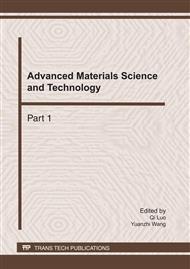p.861
p.866
p.873
p.879
p.884
p.890
p.896
p.902
p.908
Effect of Cutting Parameters on Dimensional Deviation and Surface Roughness in Machining 0Cr18Ni12Mo2Cu2 Steel
Abstract:
The aim of this study is to find the influence of cutting parameters and tools on surface roughness and dimensional deviation for better production quality in machining 0Cr18Ni12Mo2Cu2 steel. The most important parameters like cutting velocities, depth of cut and feed rate are considered. The experiments designed four types of boring tool rake angle and two types of coolant, and measured surface roughness and radial runout of workpiece with three acclivitous holes. The results showed that the surface integrity of workpiece obtained by 0.16 mm/rev feed rate with rake angle of tool 25o were superior to that obtained by the previous boring processes. Radial runout precision was highest when feed rate and rake angle were 0.13 mm/rev and 23o, respectively. According to experimental results, the rake angle and structure of boring tool were improved.
Info:
Periodical:
Pages:
884-889
Citation:
Online since:
January 2011
Authors:
Price:
Сopyright:
© 2011 Trans Tech Publications Ltd. All Rights Reserved
Share:
Citation:


